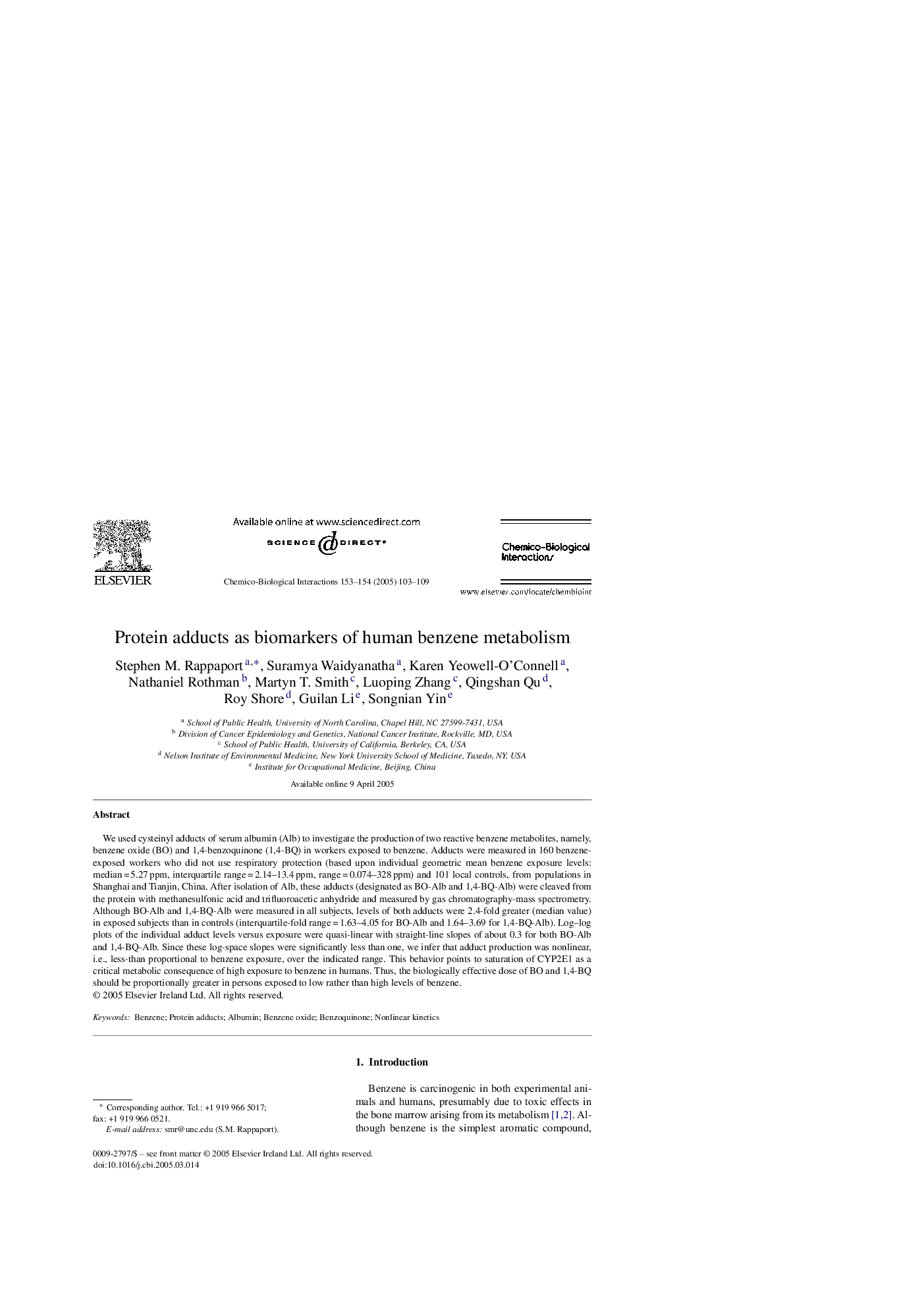| Article ID | Journal | Published Year | Pages | File Type |
|---|---|---|---|---|
| 9028584 | Chemico-Biological Interactions | 2005 | 7 Pages |
Abstract
We used cysteinyl adducts of serum albumin (Alb) to investigate the production of two reactive benzene metabolites, namely, benzene oxide (BO) and 1,4-benzoquinone (1,4-BQ) in workers exposed to benzene. Adducts were measured in 160 benzene-exposed workers who did not use respiratory protection (based upon individual geometric mean benzene exposure levels: median = 5.27 ppm, interquartile range = 2.14-13.4 ppm, range = 0.074-328 ppm) and 101 local controls, from populations in Shanghai and Tianjin, China. After isolation of Alb, these adducts (designated as BO-Alb and 1,4-BQ-Alb) were cleaved from the protein with methanesulfonic acid and trifluoroacetic anhydride and measured by gas chromatography-mass spectrometry. Although BO-Alb and 1,4-BQ-Alb were measured in all subjects, levels of both adducts were 2.4-fold greater (median value) in exposed subjects than in controls (interquartile-fold range = 1.63-4.05 for BO-Alb and 1.64-3.69 for 1,4-BQ-Alb). Log-log plots of the individual adduct levels versus exposure were quasi-linear with straight-line slopes of about 0.3 for both BO-Alb and 1,4-BQ-Alb. Since these log-space slopes were significantly less than one, we infer that adduct production was nonlinear, i.e., less-than proportional to benzene exposure, over the indicated range. This behavior points to saturation of CYP2E1 as a critical metabolic consequence of high exposure to benzene in humans. Thus, the biologically effective dose of BO and 1,4-BQ should be proportionally greater in persons exposed to low rather than high levels of benzene.
Related Topics
Life Sciences
Environmental Science
Health, Toxicology and Mutagenesis
Authors
Stephen M. Rappaport, Suramya Waidyanatha, Karen Yeowell-O'Connell, Nathaniel Rothman, Martyn T. Smith, Luoping Zhang, Qingshan Qu, Roy Shore, Guilan Li, Songnian Yin,
